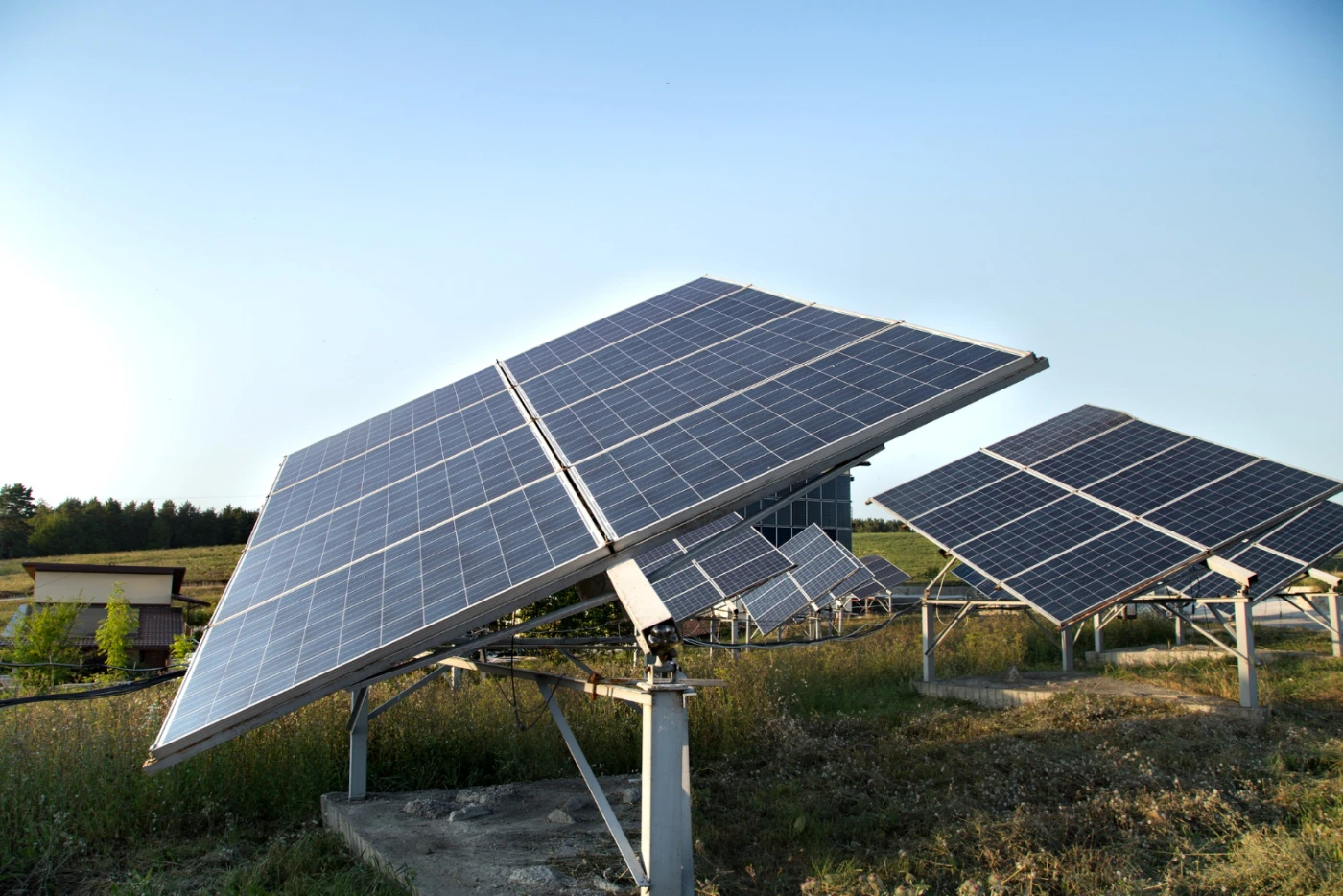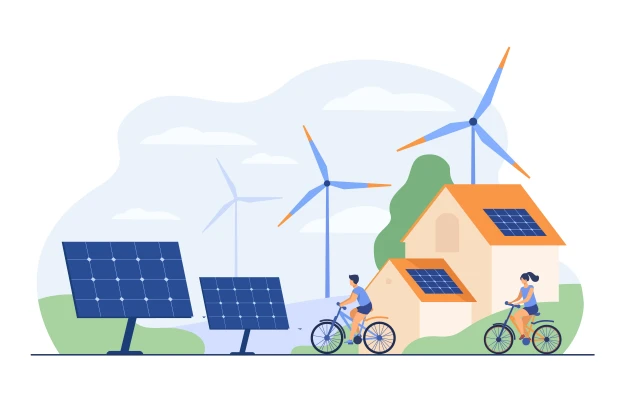Navigating the Solar Installation Process with BESCOM and KPTCL Approvals

As solar adoption grows in Karnataka, particularly in metropolitan hubs such as Bangalore, navigating the regulatory maze becomes critical for a successful solar installation process. BESCOM (Bangalore Electricity Supply Company) and KPTCL are two major players in the solar panel installation process. This article provides a complete explanation of how to effectively receive approval from both bodies to connect your solar system to the grid and to effectively follow the solar installation steps.
Understanding the roles of BESCOM and KPTCL.
A successful solar installation process in Karnataka is contingent on compliance with two important electricity sector bodies: BESCOM and KPTCL. Both play unique but complementary functions in ensuring that your solar energy system operates securely and efficiently on the electrical grid.
BESCOM (Bangalore Energy Supply Company) manages energy distribution in Bangalore and nearby areas. In terms of solar installations, BESCOM is responsible for:
- Processing applications for Low Tension (LT) connections, primarily for residential and small commercial settings.
- Approve net metering systems, which allow consumers to return excess electricity to the grid.
- Inspecting solar installations to ensure compliance with safety and technical norms.
Installing bidirectional meters to monitor both incoming and exported energy. BESCOM also operates the online solar portal, which handles all grid applications, net metering requests, and tracking. They are your principal point of contact for solar installations under a particular power level.
KPTCL manages Karnataka’s high-voltage transmission infrastructure. While residential users may not frequently interface with KPTCL directly, their involvement becomes crucial for:
- Providing High Tension (HT) power connectors for industrial and big commercial solar systems.
- Load flow analysis and system impact studies are conducted to examine whether a solar system can be safely integrated into the grid.
- Issuing permits for load augmentation or HT feeder connectivity.
- KPTCL guarantees that the state’s power infrastructure remains intact, even as increasingly decentralized power sources, like as rooftop solar, are introduced.
Understanding the duties of these two groups allows you to prevent delays, speed approvals, and verify that your system is legally and technically compliant.
Step-by-Step Solar Installation Process for BESCOM and KPTCL Approvals

1. Site feasibility and load assessment.
A certified solar installer will conduct a site visit and assess:
- Rooftop/Land Availability
- Electrical load requirements:
- Shadow-free areas for panel installation.
2. Prepare documentation.
Typical documents needed:
- Aadhar Card or Company Registration Documents
- Current electricity bill and property tax receipt
- Solar system design, capacity, and Single Line Diagrams (SLDs)
- Structural stability certificate (if applicable)
3. Apply for Grid Connectivity through BESCOM.
- Visit the BESCOM solar site and create a user account
- Submit the application form online along with scanned documents.
- Pay the relevant processing fees.
4. Apply for KPTCL Approval (HT connections)
- Required only if the sanctioned load exceeds the LT capacity.
- Submit a separate application for load enhancement or HT grid connection.
- This could include a load flow analysis or a system impact evaluation.
5. Apply for net metering.
- Complete the net metering form on the BESCOM portal.
- Pay costs for bidirectional meters.
- Submit your indemnification bond and additional declarations.
6. Technical inspection by BESCOM officials.
- Verification of installed solar components
- Safety and compliance inspections (earthing, isolation switch, etc.)
- System capacity matches the approved design.
7. Signing the Power Purchase Agreement (if applicable).
- For gross metering or large-scale systems, a PPA may be necessary
- Specifies the pricing, duration, and terms of energy purchase.
8. Installation of Net Meter and Synchronization
- BESCOM installs a bidirectional net meter.
- Grid synchronization is conducted and documented.
- The commissioning certificate is issued.
Common Challenges and Ways to Overcome Them
Navigating BESCOM and KPTCL permissions can be a complicated and difficult process. Here are some of the most common hurdles that solar adopters confront and effective ways for overcoming them in solar installation process.
- Documentation Errors: Incomplete or mismatched paperwork are the most common reason for application rejection. Ensure that your Aadhar card, electricity bill, property tax receipt, system design, and Single Line Diagram (SLD) are properly completed and signed by authorized personnel. Before submitting, double-check all of your information.
- Coordination delays. Miscommunication or overlapping roles between BESCOM and KPTCL might cause delays in the implementation of HT connections or projects that require clearance from both bodies. Choose a solar vendor who is familiar with both systems and maintain constant communication with both departments. Use tracking IDs and written communication to ensure transparency.
- HT Approval Delays: Industrial and big commercial solar systems frequently face bottlenecks in KPTCL due to mandated load flow studies, technical inspections, or awaiting clearances. To expedite the process, apply for load improvement or HT connectivity well in advance, and submit technical documentation such as system layout and equipment specifications as soon as possible.
- Grid Infrastructure Constraints: In some places, the grid may be unable to sustain extra solar capacity due to transformer load or feeder capacity constraints. In such cases, consult BESCOM about alternatives, such as partial grid feed or hybrid systems with battery backup. Also, check to see if any infrastructure updates are scheduled.
- Scheduling Inspections: Obtaining timely site visits and inspections from BESCOM may be delayed owing to manpower shortages or backlog. Be proactive: once your paperwork have been filed, contact the appropriate BESCOM division office and request an inspection date. Some installers have liaison teams that can assist with this procedure.
- Policy Updates: Solar policies and procedures change often, and failing to stay current can result in rejection. Stay informed by visiting BESCOM’s official website or requesting your installer to keep you updated.
By preparing for these issues and working with a well-connected and skilled solar installer, you can reduce delays and put your solar project on track for timely completion and long-term success in solar installation process.
Tips for a Smooth Approval Process
Securing BESCOM and KPTCL approvals may appear bureaucratic, but by following these concrete recommendations, you may expedite the process and avoid typical pitfalls:
- Hire MNRE-approved solar vendors: Work only with MNRE-certified installers. These individuals are familiar with the BESCOM/KPTCL processes and can help with proper documentation and timely submissions.
- Begin the Approval Process Early: Do not wait till your system is installed before starting apps. Begin submitting essential forms and paperwork as soon as your system design is complete.
- Track Application Status: BESCOM provides online tracking portals. Keep track of your application’s progress and respond quickly to any questions or missing papers.
- Ensure accurate and complete documentation: Verify that all documents, including the Single Line Diagram, structural certificates, and tax receipts, are valid and properly signed. Errors in paperwork are a major cause of delays.
- Maintain System Compliance: During installation, make sure that all electrical and structural components meet local safety requirements. Use the required earthing, MCBs, and isolators as per BESCOM requirements.
- Keep Digital and Physical Copies of Submissions: Always keep organized records of everything submitted, including payment receipts, approval letters, and system drawings. This facilitates conflict resolution and follow-ups.
- Leverage Your Installer’s Network: Established solar firms frequently have liaison officers or established contact lines with BESCOM and KPTCL, which can help to expedite approvals.
- Schedule Site Visits Proactively: Once documentation has been received, follow up with BESCOM to schedule site inspections and meter installations without delay.
By being proactive and organized, you can shorten the approval process and enjoy your solar benefits sooner.
Conclusion
While navigating BESCOM and KPTCL approvals for your solar installation may appear daunting, the right approach and an experienced installer can make the process easier. With careful planning, accurate documentation, and timely follow-up, you can ensure that your solar system is grid-compliant, safe, and eligible for net metering benefits. Embrace clean energy in the proper way: through compliance and efficiency.

 Chat for Subsidy Help
Chat for Subsidy Help
Arrow Solar